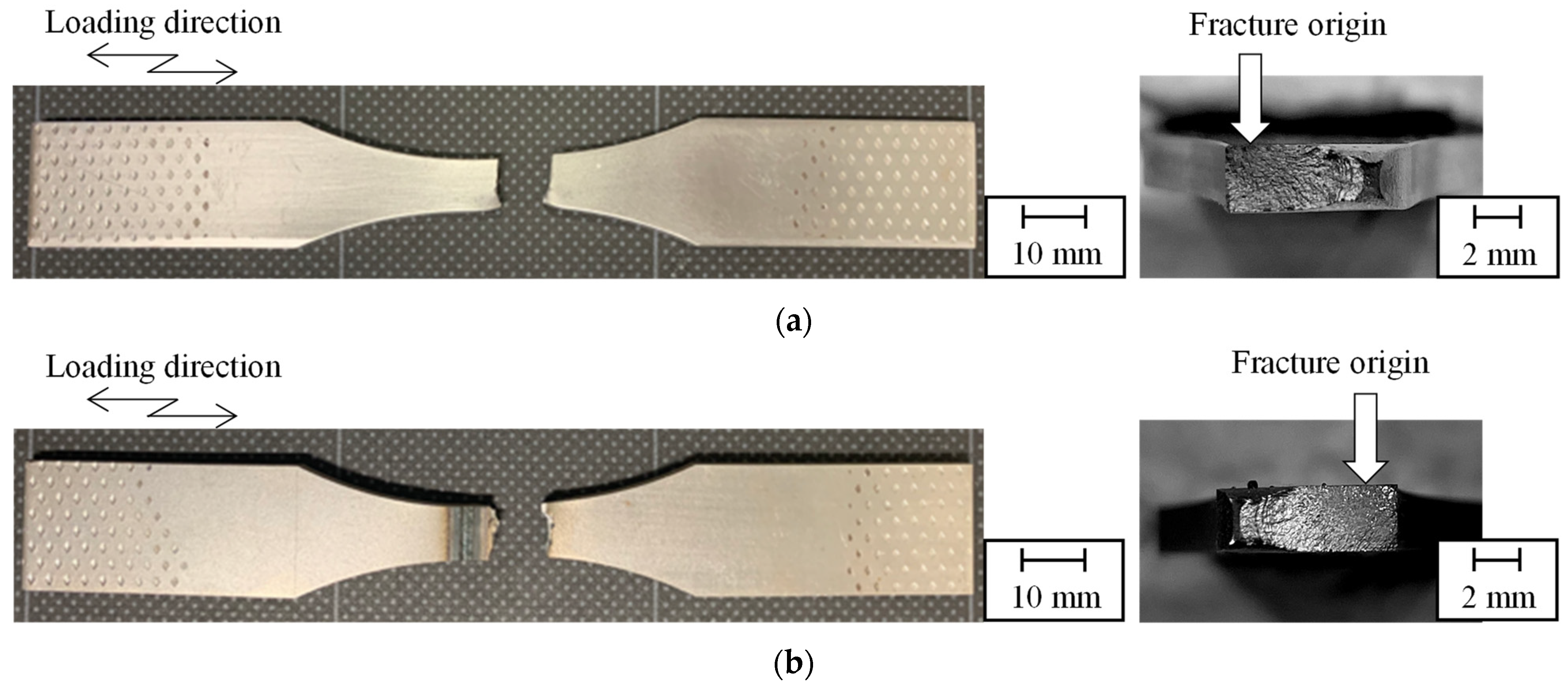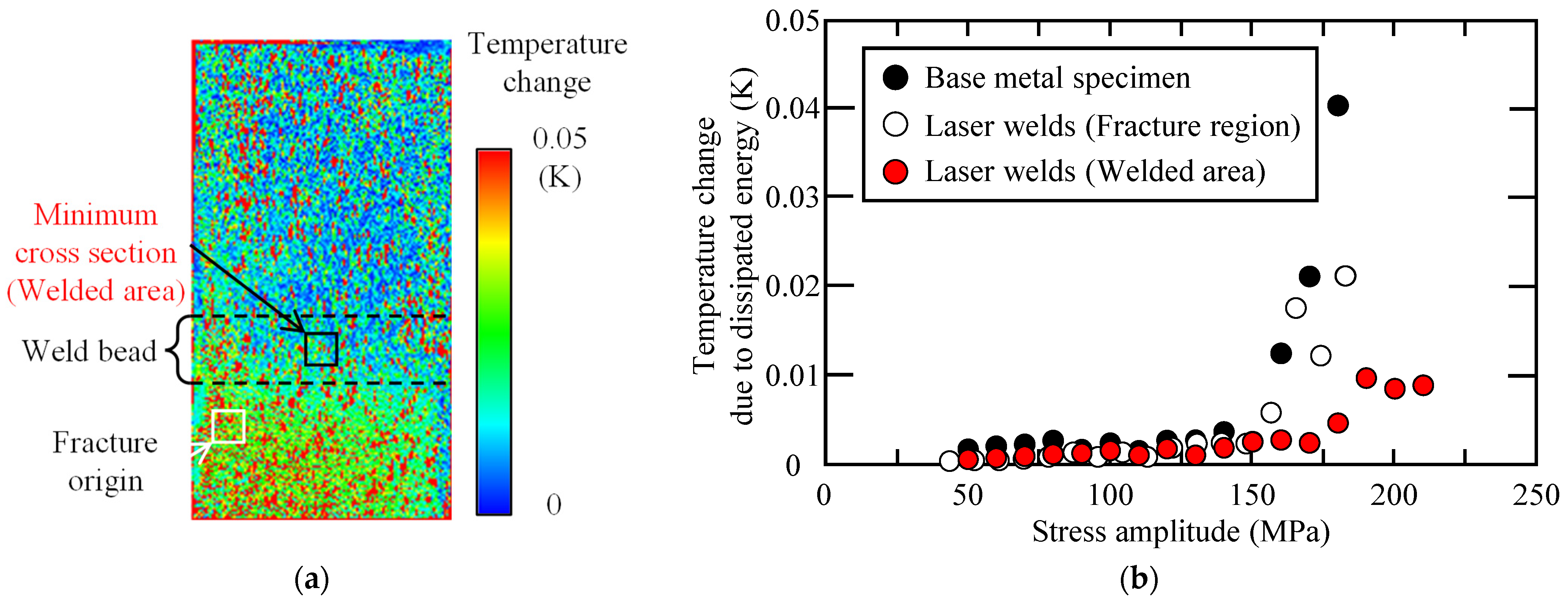Evaluation of Fatigue Strength Based on Dissipated Energy for Laser Welds †
Abstract
:1. Introduction
2. Materials
3. Results and Discussion
3.1. Cross-Sectional Observation and Hardness Test Results for Laser Welds
3.2. Fatigue Test
3.3. Fatigue Limit Estimation Based on Dissipated Energy for Base Metal and Laser Welds
4. Conclusions
Data Availability Statement
Acknowledgments
References
- La Rosa, G.; Risitano, A. Thermographic Methodology for Rapid Determination of the Fatigue Limit of Materials and Mechanical Components. Int. J. Fatigue 2000, 22, 65–73. [Google Scholar] [CrossRef]
- Akai, A.; Shiozawa, D.; Yamada, T.; Sakagami, T. Dissipation Measurement in Improved Spatial Resolution Under Fatigue Loading. Exp. Mech. 2020, 60, 181–189. [Google Scholar] [CrossRef] [Green Version]
- Shiozawa, D.; Ogino, Y.; Washio, T.; Sakagami, T.; Ueda, H.; Maikino, T. Fatigue Limit Estimation for Single Bead-On-Plate Weld Based on Dissipated Energy Measurement. In Residual Stress, Thermomechanics & Infrared Imaging, Hybrid Techniques and Inverse Problems; Springer: Cham, Switzerland, 2019; Volume 7, pp. 119–123. [Google Scholar]
- Shiozawa, D.; Inagawa, T.; Washio, T.; Sakagami, T. Accuracy improvement in dissipated energy measurement by using phase information. Meas. Sci. Technol. 2017, 28, 044004. [Google Scholar] [CrossRef]





Publisher’s Note: MDPI stays neutral with regard to jurisdictional claims in published maps and institutional affiliations. |
© 2021 by the authors. Licensee MDPI, Basel, Switzerland. This article is an open access article distributed under the terms and conditions of the Creative Commons Attribution (CC BY) license (https://creativecommons.org/licenses/by/4.0/).
Share and Cite
Ogawa, Y.; Horita, T.; Iwatani, N.; Kadoi, K.; Shiozawa, D.; Sakagami, T. Evaluation of Fatigue Strength Based on Dissipated Energy for Laser Welds. Eng. Proc. 2021, 8, 6. https://doi.org/10.3390/engproc2021008006
Ogawa Y, Horita T, Iwatani N, Kadoi K, Shiozawa D, Sakagami T. Evaluation of Fatigue Strength Based on Dissipated Energy for Laser Welds. Engineering Proceedings. 2021; 8(1):6. https://doi.org/10.3390/engproc2021008006
Chicago/Turabian StyleOgawa, Yuki, Taiju Horita, Naoki Iwatani, Kota Kadoi, Daiki Shiozawa, and Takahide Sakagami. 2021. "Evaluation of Fatigue Strength Based on Dissipated Energy for Laser Welds" Engineering Proceedings 8, no. 1: 6. https://doi.org/10.3390/engproc2021008006
APA StyleOgawa, Y., Horita, T., Iwatani, N., Kadoi, K., Shiozawa, D., & Sakagami, T. (2021). Evaluation of Fatigue Strength Based on Dissipated Energy for Laser Welds. Engineering Proceedings, 8(1), 6. https://doi.org/10.3390/engproc2021008006





